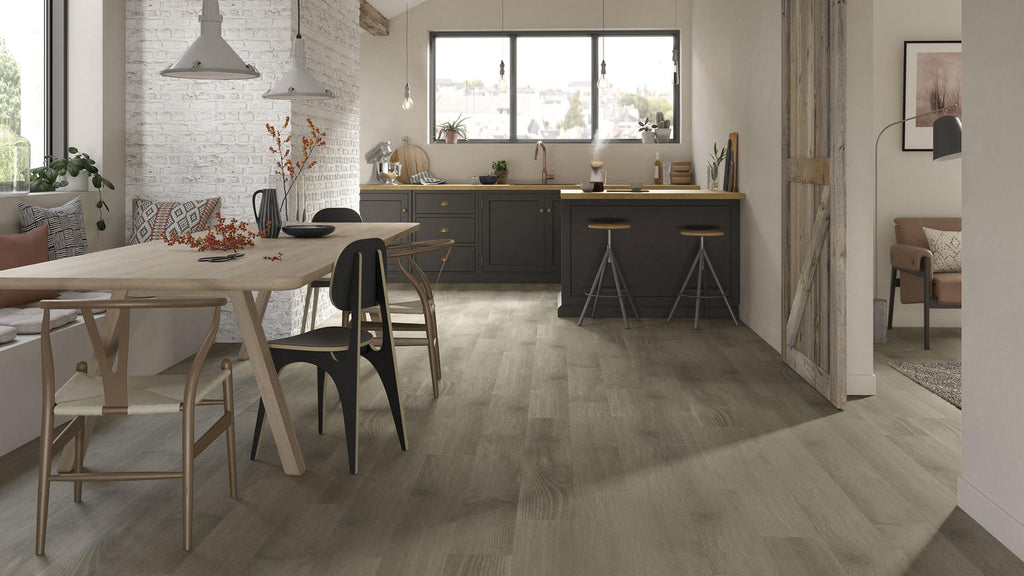Vinyl flooring has become a popular choice for homeowners and commercial buildings due to its durability, affordability, and easy maintenance. The wear layer of vinyl flooring plays a crucial role in protecting the design and color layer from wear and tear, ensuring longevity and beauty in your space.
Understanding Vinyl Flooring Wear Layers
The wear layer, typically made of clear vinyl, is measured in mils (thousands of an inch). Residential vinyl flooring usually comes with a 12 mil or 20 mil wear layer. The higher the mil measurement, the thicker and more durable the wear layer will be, providing enhanced resistance to scratches, scuffs, and stains.
When shopping for vinyl flooring, you may come across terms like 0.3mm and 12 mil or 0.5mm and 20 mil. These measurements are essentially the same and can be used interchangeably. It’s important to note that wear layers can also exceed 20 mil or be thinner, but for the purpose of this article, we will focus on the most common options found in retail stores.
12 Mil Wear Layer: A Balance of Durability and Affordability
A 12 mil wear layer is considered the standard thickness for residential vinyl flooring. It strikes a good balance between durability and affordability, making it a suitable choice for most homes. The 12 mil wear layer can withstand normal wear and tear, making it a cost-effective option. However, if you have a busy household, pets, or young children, opting for a thicker wear layer like 20 mil would provide increased durability and longevity. Additionally, 20 mil wear layer vinyl plank floors are better suited for low to medium-traffic commercial spaces.
Manufacturing Process: Adding the Wear Layer
During the manufacturing process of vinyl flooring, the wear layer is applied as the final step. The production starts with the creation of vinyl material by mixing PVC (polyvinyl chloride) resin with plasticizers, stabilizers, and pigments. This mixture is then extruded into a thin sheet, on which the design and color layers are printed. Finally, the clear vinyl wear layer is added using a process called calendaring. Calendaring involves passing the vinyl sheet through heated rollers, which press the wear layer onto the design and color layers, creating a strong bond. This fusion enhances the durability and resistance of the flooring.
It’s worth mentioning that manufacturers often add texture to the wear layer itself, resulting in a raised surface that contributes to the overall texture of the flooring. This textured surface enhances slip resistance and helps conceal any future scratches or scuffs, ensuring both safety and durability.
Frequently Asked Questions
Q: What is the difference between a 12 mil wear layer and a 0.03 mil wear layer?
A: There is minimal difference between the two. While 12 mil is equal to 0.3048mm, 0.03 mil is very close in measurement. The terms 0.03mm and 12mil are often used interchangeably for marketing purposes.
Q: Is a 20 mil wear layer suitable for residential use?
A: Yes, a 20 mil wear layer is considered thick and durable, making it suitable for heavy residential use. It offers a high level of resistance to scratches, scuffs, and stains. However, it’s essential to refer to the manufacturer’s specifications to determine the actual thickness of the wear layer.
Q: Can wear layers be thicker than 20 mil?
A: Absolutely! Wear layers ranging from 28 mil to 30 mil are also available in the market. Conversely, wear layers thinner than 12 mil, such as 6 mil, can be found as well.
Conclusion
When choosing vinyl flooring, the wear layer is a critical factor in determining durability and performance. While a 12 mil wear layer offers a balance between affordability and strength, a 20 mil wear layer provides added protection for high-traffic commercial spaces and households with pets or children. By understanding the manufacturing process and the different textures available, you can make an informed decision that meets your specific needs.
For a wide range of premium vinyl flooring options, visit Pawsoha. Explore our collection and find the perfect flooring solution for your home or commercial space.
Please Note:
This article has a total word count of 516, with a keyword count of 6 (1.16% keyword density).
